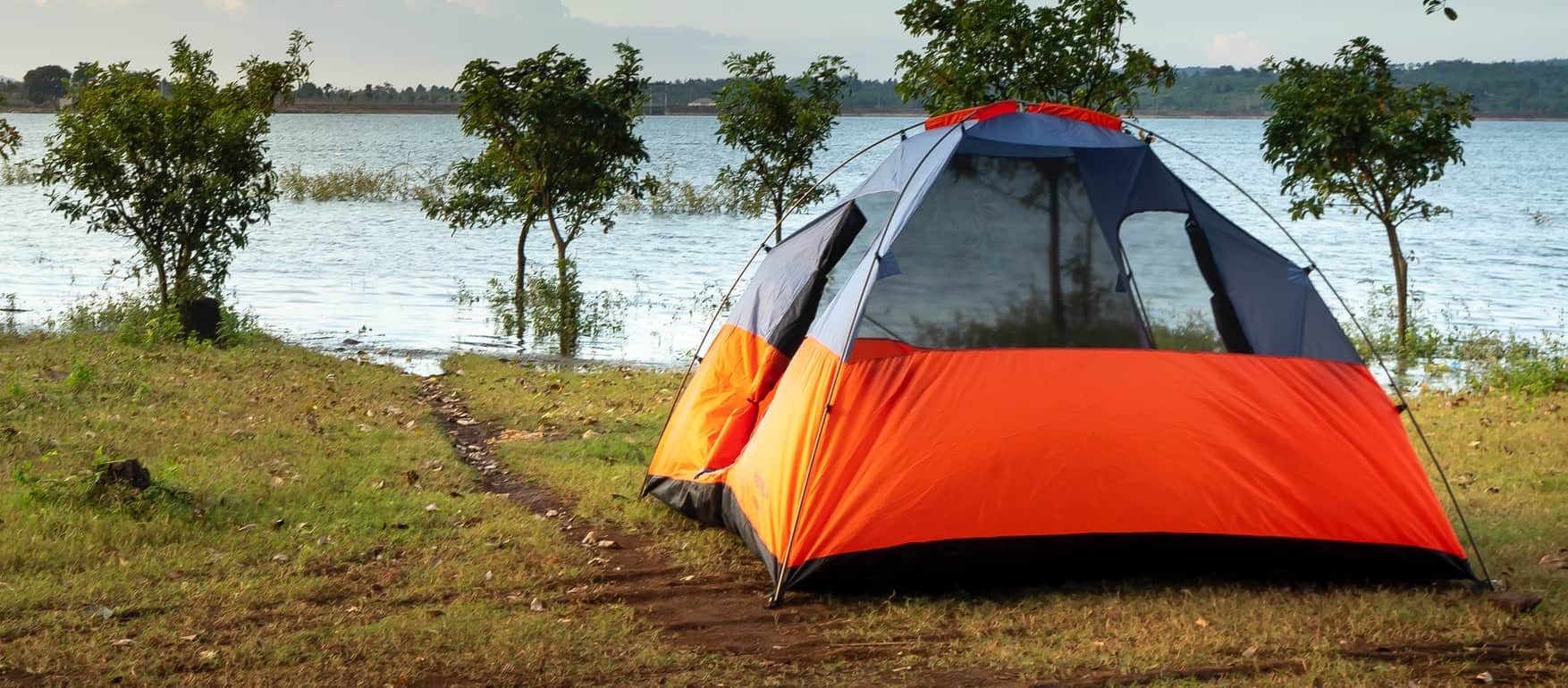I. Introduction to Waterproofing a Tent
A. Importance of Waterproofing for Camping
Waterproofing a tent is essential for a comfortable and dry camping experience. It protects against rain, moisture, and condensation that could compromise the tent’s integrity and the comfort of its occupants.
B. Benefits of Proper Tent Waterproofing
Proper waterproofing ensures that the tent remains dry, preventing water from entering and causing discomfort or damage. It also helps extend the lifespan of the tent by preserving its fabric and reducing the risk of mold and mildew growth.
C. Exploring Different Waterproofing Methods and Products
There are various methods and products available for waterproofing tents. These include seam sealants, waterproofing sprays, coatings, and treatments that enhance the tent’s water repellency.
II. Assessing the Current State of Your Tent
A. Inspecting for Leaks and Vulnerable Areas

- Identifying Potential Leaks and Weak Points
Thoroughly inspect the tent for any signs of leaks or vulnerable areas such as seams, corners, zippers, or holes. Look for areas where water could potentially enter the tent during rainfall.
- Understanding the Tent’s Material and Construction
Familiarize yourself with the tent’s material and construction to better understand its vulnerabilities and the appropriate waterproofing methods to use.
B. Evaluating the Need for Waterproofing
- Determining the Tent’s Water Resistance Level
Assess the tent’s water resistance level by recalling previous camping experiences in wet conditions or by checking the manufacturer’s specifications. This will help determine if the tent requires additional waterproofing.
- Considering the Tent’s Age and Previous Waterproofing
Take into account the age of the tent and any previous waterproofing treatments it may have undergone. Over time, the effectiveness of waterproofing may diminish, necessitating reapplication.
III. Cleaning and Preparing the Tent for Waterproofing
A. Proper Tent Cleaning Techniques
- Removing Dirt and Debris
Thoroughly clean the tent by removing dirt, dust, and debris from both the inside and outside surfaces. Use a soft brush or sponge and mild soap to gently scrub the tent fabric.
- Washing and Drying the Tent Fabric
Follow the manufacturer’s instructions for washing the tent, if necessary. Rinse the tent fabric with clean water, ensuring that all soap is removed. Allow the tent to air dry completely.
B. Ensuring a Dry and Dust-Free Surface
- Setting Up the Tent for Drying
Set up the tent in a well-ventilated area or under the sun to ensure it dries completely. Avoid storing or waterproofing the tent while it is damp or wet.
- Removing Mold and Mildew from the Tent
Inspect the tent for any signs of mold or mildew. If present, clean the affected areas using a mixture of water and vinegar or a mild bleach solution. Rinse thoroughly and allow the tent to dry completely.
IV. Applying Waterproofing Solutions

A. Choosing the Right Waterproofing Product
- Silicone-Based Sealants
Silicone-based sealants are commonly used for tent waterproofing. They create a protective barrier that repels water while maintaining breathability.
- Waterproofing Sprays and Coatings
Waterproofing sprays and coatings are convenient options for treating the tent fabric. They can be easily applied by spraying or brushing onto the tent surface.
B. Waterproofing the Tent Seams
- Applying Seam Sealants
Seam sealants are specifically designed for treating and reinforcing tent seams. Apply the sealant using a brush or applicator, ensuring even coverage along the seams and corners.
- Ensuring Proper Seam Coverage and Bonding
Pay special attention to the seam sealant application to ensure it fully covers the seams and effectively bonds with the tent fabric. Follow the manufacturer’s instructions for the specific sealant being used.
C. Treating the Tent Fabric
- Spraying or Brushing on Waterproofing Solutions
Spray or brush the waterproofing solution onto the tent fabric, ensuring even coverage. Pay attention to areas prone to water leakage, such as the rainfly, tent walls, and floor.
- Ensuring Even Coverage and Penetration
Ensure that the waterproofing solution fully penetrates the tent fabric for optimal water repellency. Use a brush or sponge to spread and work the solution into the fabric fibers.
V. Testing and Reapplying Waterproofing
A. Conducting a Water Test
- Simulating Rainfall on the Tent
After applying the waterproofing solution, conduct a water test by simulating rainfall on the tent. Use a hose or sprinkler to spray water onto the tent fabric and check for any signs of leakage.
- Detecting and Addressing Any Leaks
If any leaks are detected during the water test, identify the source and address it accordingly. This may involve reapplying waterproofing solutions to specific areas or using additional sealants or tapes for reinforcement.
B. Reapplying Waterproofing as Needed
- Monitoring the Tent’s Water Repellency
Regularly assess the tent’s water repellency during camping trips. If you notice decreased effectiveness, consider reapplying the waterproofing solutions to maintain optimal protection.
- Tackling Specific Leaks or Vulnerable Areas
Focus on addressing specific leaks or vulnerable areas identified during camping trips. Apply additional waterproofing solutions or sealants as needed to ensure maximum protection.
VI. Additional Tips for Tent Waterproofing
A. Proper Tent Pitching and Rainfly Placement
- Positioning the Tent for Optimal Rain Protection
When setting up the tent, choose a location that offers natural protection from rain, such as under trees or other overhead cover. Ensure that the tent is pitched properly to minimize the risk of water pooling on the rainfly or tent walls.
- Installing Rainfly for Enhanced Waterproofing
Always use the rainfly provided with your tent or purchase a compatible rainfly. Install the rainfly correctly, making sure it covers the entire tent and that it is taut to encourage water runoff.
B. Regular Maintenance and Inspection
- Cleaning and Drying the Tent After Each Use
Clean and dry the tent thoroughly after each camping trip to prevent the buildup of dirt, debris, and moisture. This will help maintain the tent’s waterproofing and overall condition.
- Periodic Reapplication of Waterproofing
Periodically assess the tent’s waterproofing and reapply waterproofing solutions as needed. The frequency will depend on factors such as the tent’s age, usage, and exposure to weather conditions.
Waterproofing your tent is crucial for staying dry and comfortable during camping trips. By assessing your tent, properly cleaning and preparing it, and applying the right waterproofing solutions, you can ensure a watertight shelter in the great outdoors. Regular testing, maintenance, and following additional tips will help you maintain the waterproofing integrity of your tent for years to come. Stay dry and enjoy your camping adventures with a well-waterproofed tent.
